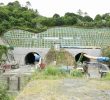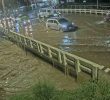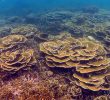DAVAO CITY (Updated Sept 3, 5:23PM) – The forest guards of Bantay Gubat in Mount Hamiguitan, where the Philippine Eagle Pamana was released and found killed last month, identified four other possible factors that lead to the death of the Philippine eagle (scientific name: Pithecophaga jefferyi) including the readiness of the bird to fly.
Roel Colong of Bantay Gubat said that aside from finding out who the perpetrator was and the motive behind Pamana’s killing, his group also identified four other causal factors that would help the investigation on Pamana’s death.
Colong said that they were concerned on the appropriate release site, if there were enough preparations prior to the release of Pamana to the wilds, if Pamana’s physical readiness to be released was ascertained, and if there were effective and responsive conservation plan.
Colong pointed out in a press conference here Wednesday, that when Pamana was reported lost, they did not hear feedbacks from the forest guards. He said they received information from reports after Pamana was found dead not more than a kilometer away from his habitat.
Colong said Pamana’s release site “is placed within an agro-eco system which means a vegetation type composed of farm lands, farm animals, communities, and natural forests.”
“There are many preparations [prior to the release], which includes physical preparation of Pamana,” he added.
“Was Pamana physically fit?” he asked.
Colong said “when she [Pamana] was less than a year old, she was shot twice in the forest in Iligan. She was rescued, treated, and rehabilitated for almost three years.”
Colong said that Pamana’s long years staying in an artificial habitat and being fed by humans might affect the bird’s ability to survive in the wild.
“Her ability to hunt [for] food is a factor, she will be hunting on her own. I just hope that she is not hunting on farm animals, otherwise she will be put in danger,” he said adding that farm animals are also sources of livelihood of the owners.
Colong also asked if there is an effective and responsive conservation plan.
“Was there an effective and responsive conservation plan?” he said referring to “reporting, monitoring, feed backing, and collaboration system with all the involved parties in the local government unit.”
Bantay Gubat is a group of individuals who are tasked to guard the forest where Pamana was set free. It is funded by the Department of Environment and Natural Resources and participated by individuals from the local government units where the forest is located.
Meanwhile, Joselin Marcus Fragada of DENR Region XI told reporters that they are still investigating deeper the death of the endangered species.
“There are hearsay that there might have hunters in the area, but the the history of Mt. Hamiguitan, for the past years [says otherwise],” Fragada said.
Fragada added they have identified that the gun used to kill Pamana was an air gun.
“We’d like to find out the regulations of carrying such weapons, I don’t know if you can call it a weapon because it’s an air gun,” he said.
He said “it would be unfair to judge the communities.”
“Kung hunter ka kukunin mo yung prize niyo, tama? That’s my belief. But, I don’t think the intention of killing Pamana was to kill her for sport (If you are a hunter, you will get your prize, right?),” he said.
Pamana was released in the wild on June 12, in the forest of Mt. Hamiguitan in Davao Oriental which was declared as a World heritage site by the United Nations Educational, Scientific, and Cultural Organization (Unesco). She was found dead last August 16 outside her site of release.(With reports from Ace R. Morandante/davaotoday.com)










